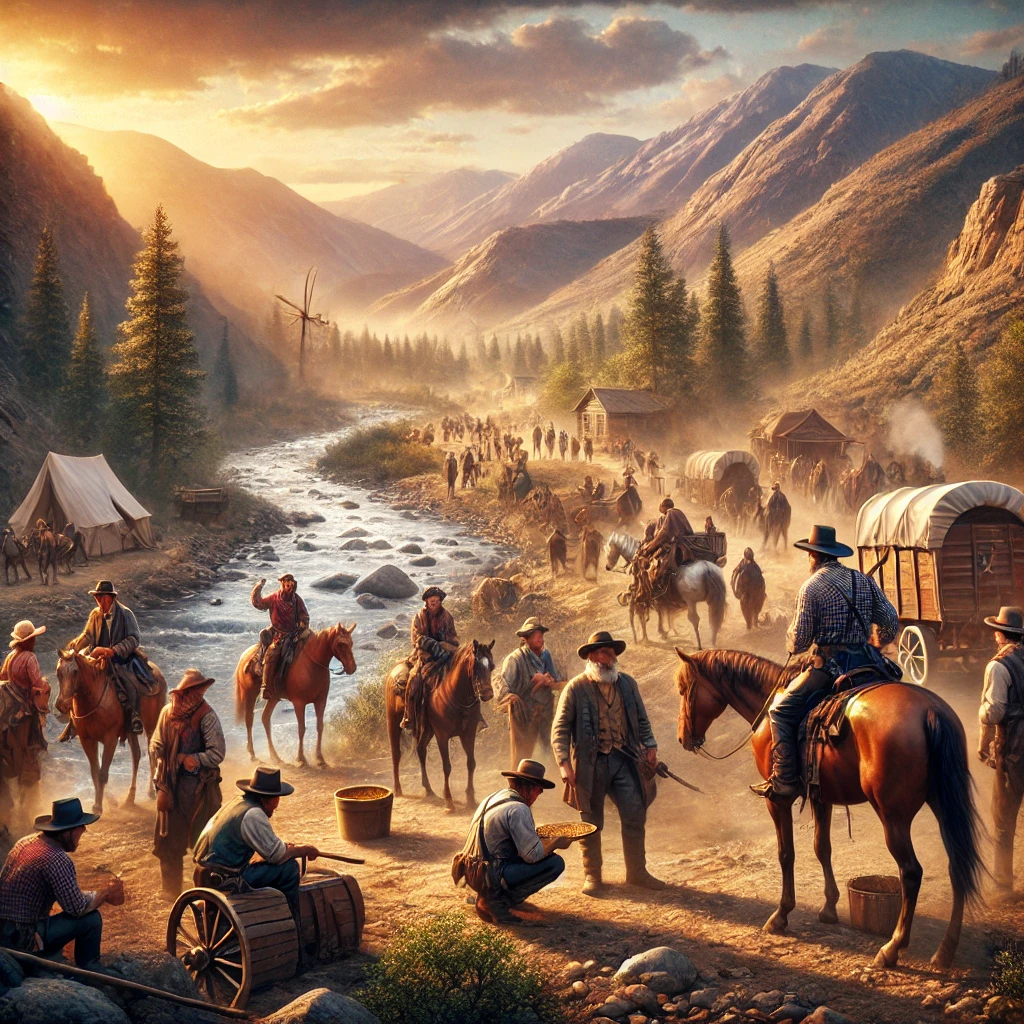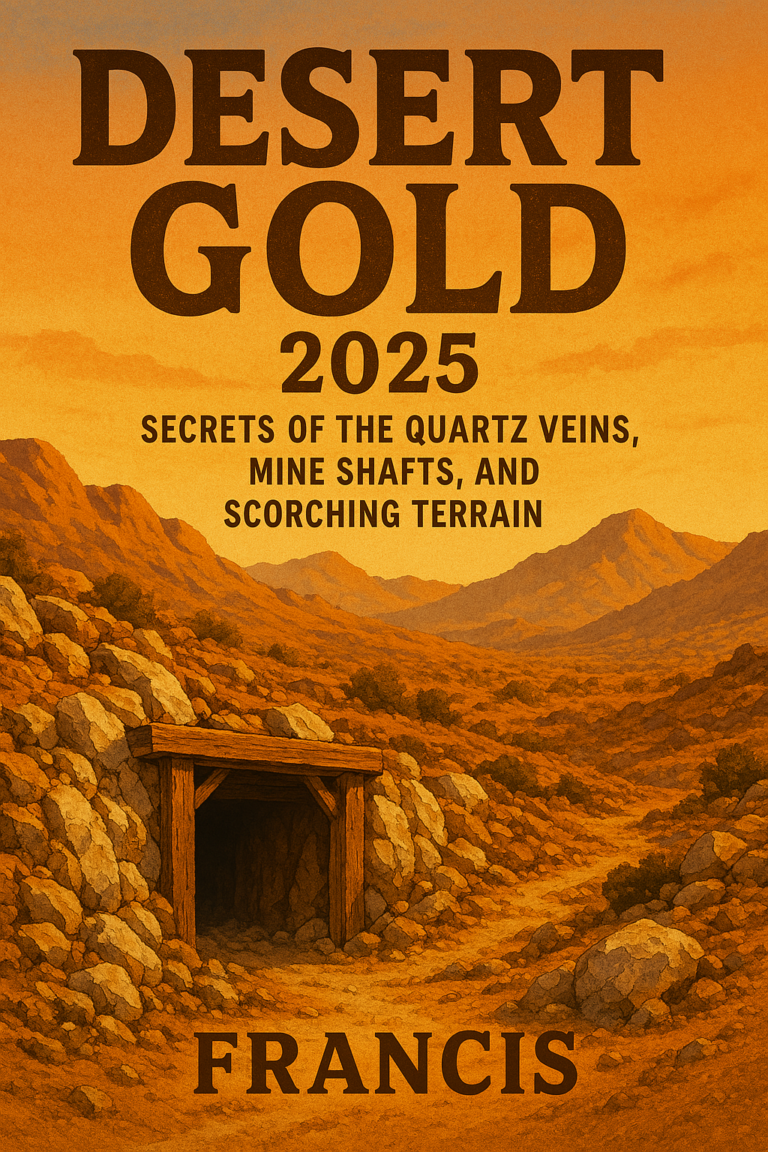The California Gold Rush of 1849: Stories About Gold

The California Gold Rush of 1849 is one of the most significant events in American history, shaping the nation’s economy, culture, Stories About Gold and demographics in profound ways. It began with a simple, yet monumental, discovery that would ignite a feverish migration of hopeful prospectors from around the world, each eager to strike it rich in the gold fields of California. However, the reality of gold prospecting proved to be far harsher than the romanticized visions that lured thousands to the West.
The Discovery and Spread of News
The California Gold Rush began on January 24, 1848, when carpenter James W. Marshall discovered gold flakes in the American River at Sutter’s Mill near present-day Coloma, California. Although Marshall and John Sutter tried to keep the discovery quiet, word quickly spread. By spring 1848, whispers of gold turned into widespread excitement, and by year’s end, news had reached across the United States and around the world.
News of the gold discovery spread quickly, considering the communication limitations of the time. First, word spread across California, and soon newspapers on the East Coast picked up the story. The true spark of the Gold Rush came when President James K. Polk confirmed the discovery in his State of the Union address on December 5, 1848. His announcement, along with reports from sailors, traders, and letters from California, ignited a wave of “gold fever” that rapidly swept across the nation and the globe.
The Migration of Prospectors
The promise of gold drew people from all walks of life and from every corner of the globe. This mass migration is often referred to as the “49ers,” after the year 1849, when the Gold Rush reached its peak.
- From the United States:
Thousands of Americans from the East Coast, Midwest, and South packed up and headed west. Some took the overland route, enduring the tough journey along the California or Oregon Trails. These treks lasted months and carried serious risks, such as harsh weather, disease, and attacks. Others opted for sea routes, either sailing around South America’s southern tip—a grueling 18,000-mile trip—or choosing a perilous shortcut through the Isthmus of Panama. There, they crossed the jungle on foot before boarding another ship to California.
- From Around the World:The Gold Rush wasn’t just an American phenomenon. People from Latin America, Europe, Asia, and Australia flocked to California. Ships from China carried laborers escaping poverty and political unrest, while miners from Australia and South America made their way to California’s golden shores. Europeans, especially those from France, Germany, and England, joined the rush, bringing valuable mining experience that would prove crucial.
Where Gold Was Found
Gold in California was primarily found in the rivers and streams of the Sierra Nevada mountains. The first prospectors, using simple methods like panning, easily extracted gold from shallow riverbeds. As more people arrived and the accessible gold dwindled, miners adapted. They began using methods like “placer mining,” which involved washing gravel in large quantities, and “hydraulic mining,” where powerful streams of water eroded entire hillsides.
Notable areas where gold was discovered include:
- Sutter’s Mill: The original site of the gold discovery in Coloma, which triggered the rush.
- The American River: Particularly rich in gold, this river became a central hub of activity for early miners.
- The Yuba, Feather, and Mokelumne Rivers: These rivers also attracted significant numbers of prospectors.
- Mother Lode Region: Stretching from Sierra Nevada to the foothills, this region became synonymous with gold mining and was home to numerous mining camps and towns.
The Reality of the Gold Fields
The allure of gold and the promise of instant wealth drew tens of thousands to California, but the reality they found was often starkly different from their expectations. The early arrivals, or “Argonauts,” did find significant quantities of gold, but as more and more people arrived, the competition grew fierce. The easily accessible gold in the riverbeds was quickly exhausted, forcing miners to turn to more labor-intensive and expensive methods.
Living conditions in the mining camps were harsh. These makeshift settlements were crowded, dirty, and often lawless. Miners faced the constant threat of disease, injury, and violence. Supplies were scarce, and the prices of goods skyrocketed due to the influx of people. For many, the cost of living and mining far outstripped any profits they made.
Despite these hardships, some miners did strike it rich, but for every success story, there were countless others who returned home empty-handed, their dreams of wealth unfulfilled. The Gold Rush also had devastating effects on the Native American population, whose lands were overrun, and whose communities were decimated by disease and violence.
The Price of Gold
During the Gold Rush, the price of gold was fixed by the U.S. government at $20.67 per ounce, a price that would remain stable until the Gold Standard Act of 1900. However, the flood of gold into the economy had significant economic effects. The massive influx of gold from California increased the money supply, leading to inflation. Goods and services in California, where demand far outstripped supply, were particularly affected, with prices for basic necessities soaring.
The Gold Rush sparked a global surge in gold exploration and mining, as nations and individuals raced to profit from rising gold prices and soaring demand. The influx of gold boosted the U.S. economy, funded major infrastructure projects, powered industrial growth, and expanded international trade.
Conclusion: The Legacy of the Gold Rush
The California Gold Rush reshaped American history. Settlers poured into the American West, accelerating development and securing California’s statehood by 1850. Prospectors and entrepreneurs fueled rapid economic growth across the nation. While gold mining challenged and endangered many, the promise of wealth drew a bold and diverse crowd whose ambition forever shaped the story of the United States.
Today, the Gold Rush legacy lives on in the towns, roads, and culture of California and the American West. Modern prospectors and adventurers still chase the dream of striking gold, even if their search no longer centers on the rivers of the Sierra Nevada. The 49ers taught valuable lessons about perseverance, frontier challenges, and the unpredictable path to wealth—lessons that continue to guide those who seek their own gold discoveries today.






